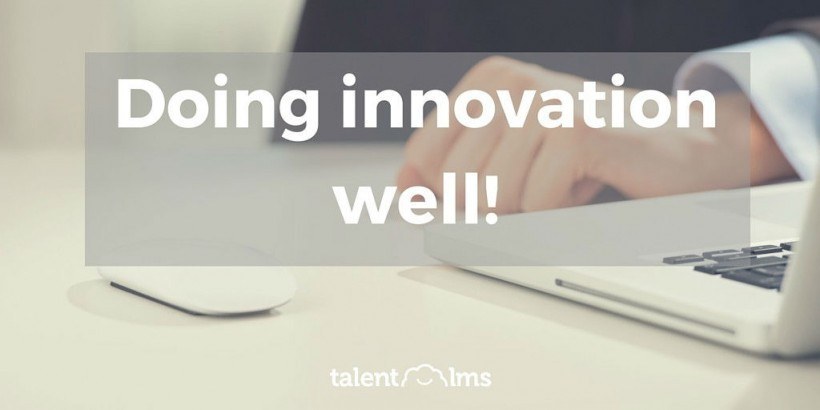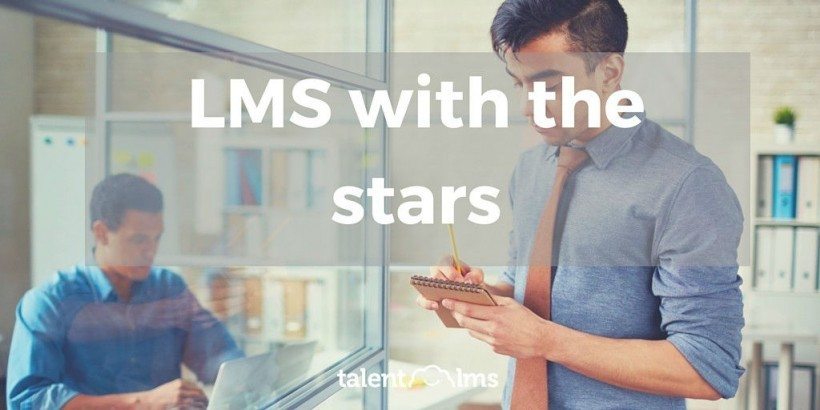TalentLMS: An Innovating And Truly Cutting Edge LMS
Innovation is all the rage these days, with every product and service being touted as “innovative”, “cutting edge”, “revolutionary”, etc.
This stems from a misguided idea held by a lot of marketing executives that users crave “new”. While that might be true for the fashion and movie industries, here at TalentLMS HQ we’d like to think that what people really want is “better”. And, of course, what’s new is not necessarily better.
Not that innovation is a bad thing in itself; it's just that most things that are sold as “innovations” are usually no more than a facelift or a couple of features slapped together in order to make a product look good in comparison matrices.
Our philosophy in building TalentLMS favors the traditional, hard earned kind of innovations, as opposed to flashy novelties and being new for the sake of new. Of course we're not alone in that, it's basically the cultural difference between a company with a marketing DNA and a company with an R&D DNA.
Real innovations come from Research and Development; marketing by itself can only get as far as creating “New Coke”. But the R&D that's actually relevant to making a product better must always have its end users in mind.
Evaluating R&D And Innovation
In TalentLMS’ case, any R&D work should “pay” for itself by improving things in at least one of these areas:
- Making the product easier to use.
This category includes UX-related improvements that can range from a change to the default color scheme to make content stand out better or be more legible, to the re-thinking and redesign of a TalentLMS workflow to make it more intuitive and to have it require fewer user actions. - Making learning more efficient.
Efficiency can be measured in lots of ways. In this particular case we refer to making TalentLMS more efficient as an eLearning tool: Improving user engagement and knowledge retention, helping instructors identify which students need further assistance or which courses/lessons are harder than they should be, etc. TalentLMS’ reporting tools fall into this category, as do its numerous gamification features and innovations. - Making the product handier.
This category refers to improvements to user workflows that speed up working with TalentLMS. Our extended options for re-using content would be a good example of making TalentLMS handier to use and saving tons of valuable user time. Automation options, from automated test/quiz creation to scheduled reports are another good example of this, as are “mass actions” (managing and doing changes to multiple users/lessons/etc. at once). - Making the product more capable.
This category pertains to changes that add new functionality to TalentLMS, like adding a new integration with a third party tool or service, or implementing some new eCommerce option. We placed this category below the others because we believe that ease of use and continued refinement of existing functionality is a much higher priority than piling features up.
Customer-Driven Vs Technology- Or Marketing-Focused Innovation
Having to justify R&D time by using the above criteria helps us keep focus on what's really important for the users, as opposed to going for what merely looks nice for the marketing team to promote, or switching to the latest fashionable technology stack for our developers to play with which doesn't add value to our product.
For a user facing industry (as opposed to academic research or hobby projects) it’s really strange how a lot of software development teams obsess over using the latest (and usually unproven) technologies or adopting the latest popular buzzwords.
What they fail to realize is that, when it comes to commercial software, doing research doesn't mean you get the chance to be a total propellerhead. Customer needs and pragmatism should always prevail over abstract academic concerns. (A certain search company, doing farfetched research into all kinds of bizarre stuff while its core offerings get slightly worse over time is a great example against these tendencies).
New Vs Better
That’s not to say that TalentLMS doesn't have its fair share of industry-first innovations either (the way we’re handling blended learning for example, or our early adoption of the Zapier meta-integration service). Just that we didn't add them to merely be “innovative”, but only after careful consideration and always with specific user needs in mind (and often in direct response to user feedback).
I’d like to close with a quote by the late great Steve Jobs that we've tweeted in the past:
“Innovation is not about saying yes to everything. It’s about saying NO to all but the most crucial features”.
Whether one is a fan of Jobs or not, he got that right. And that is the TalentLMS’ view of innovation in a nutshell.
And to illustrate our commitment to putting the user forward in all our changes, whether you call them innovations or not, have a look at our infographic about the evolution of TalentLMS.






